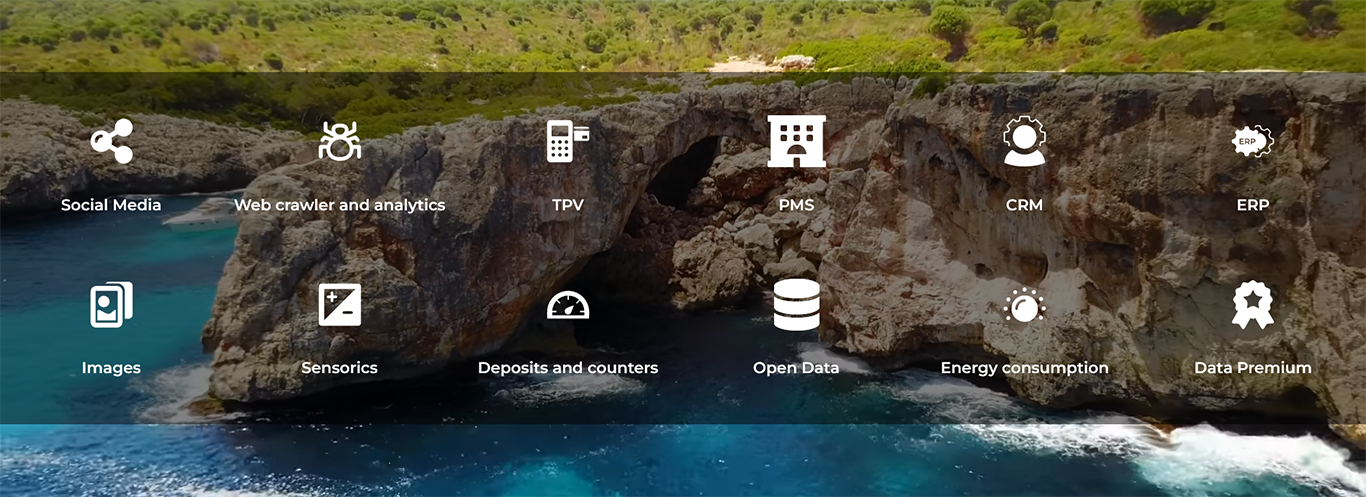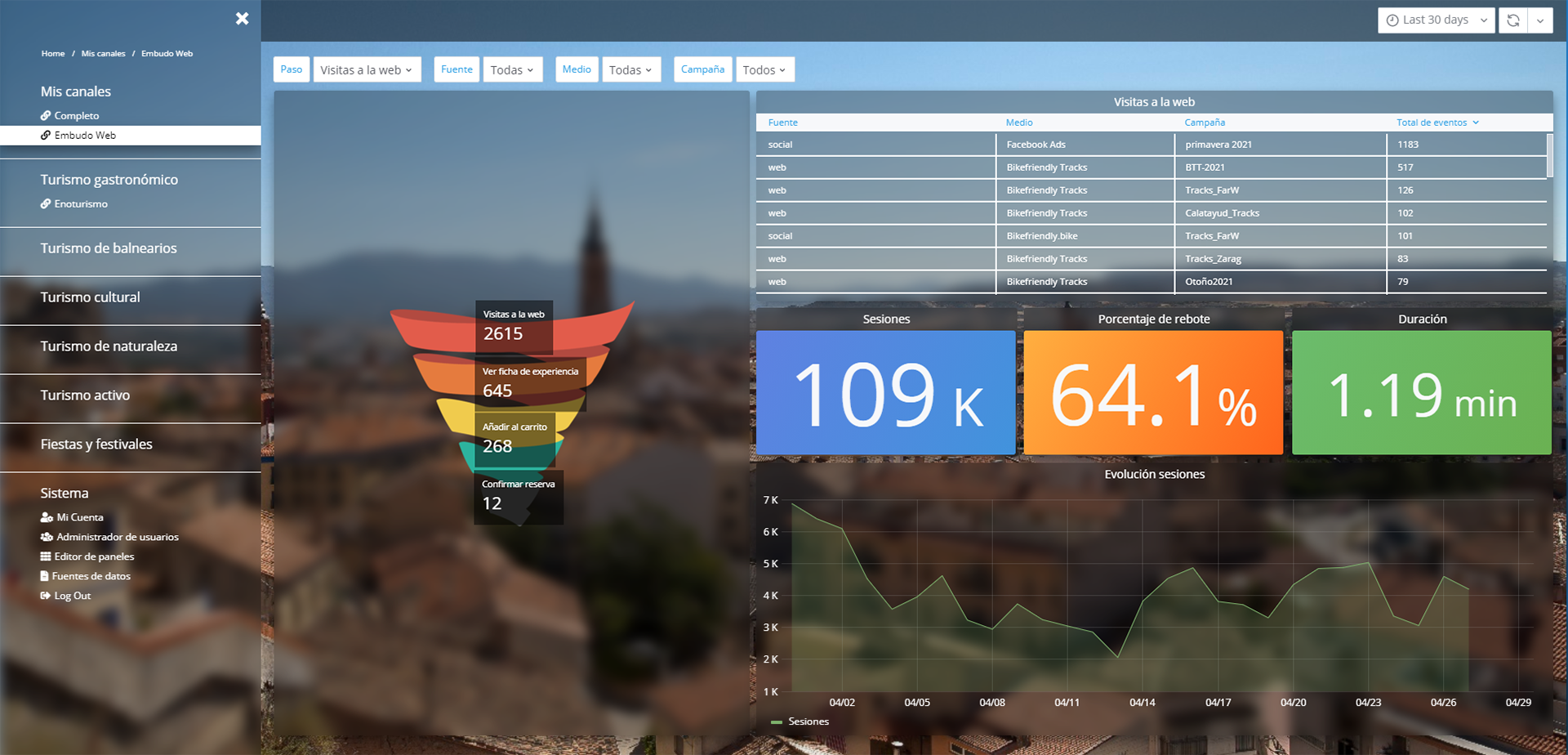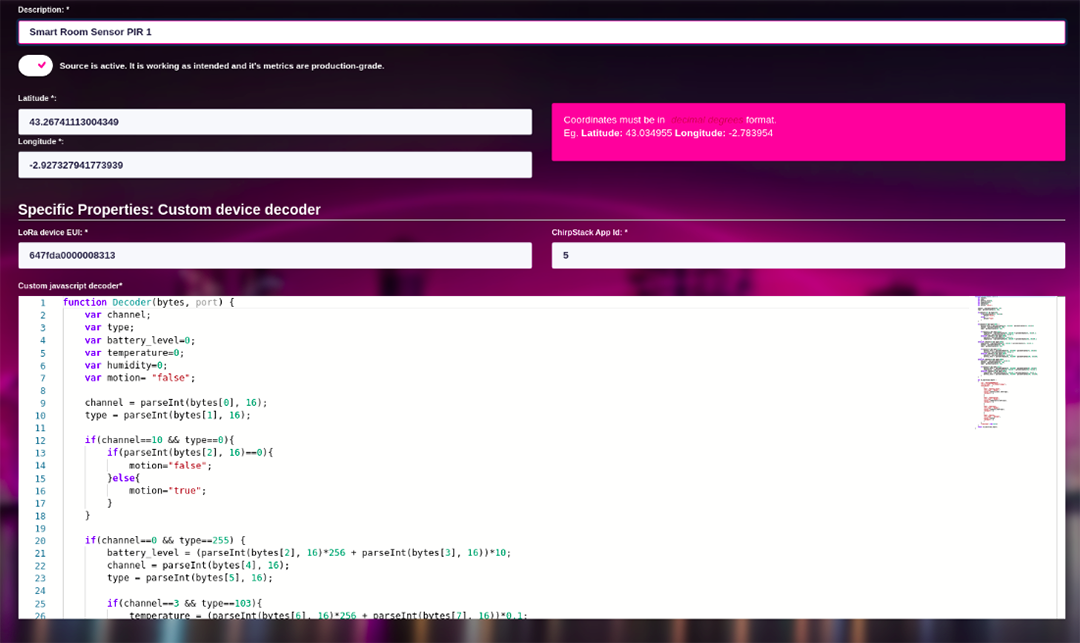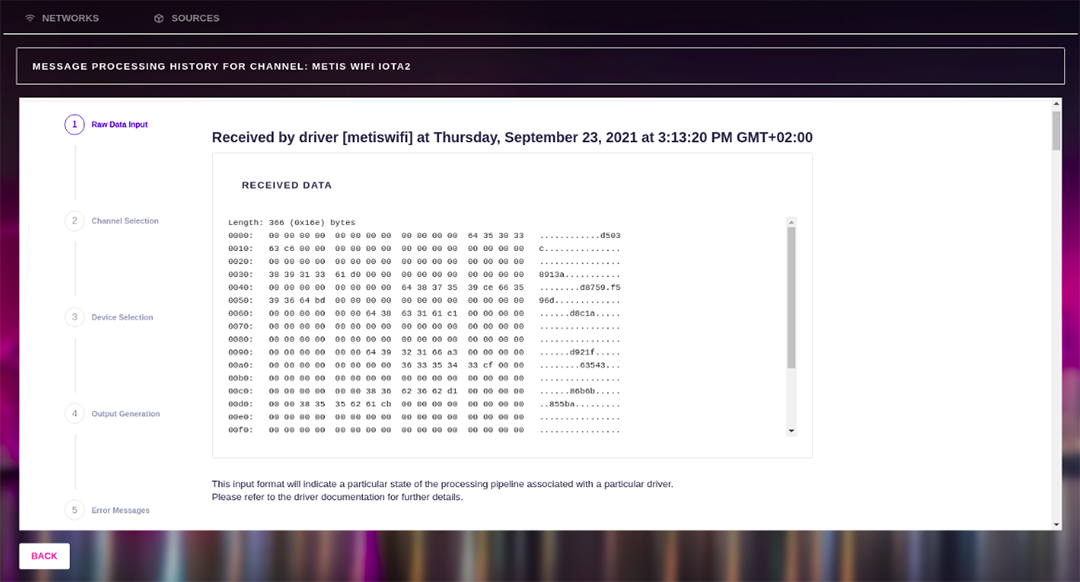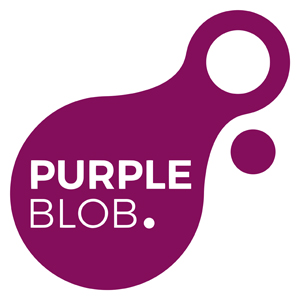Challenge & Context
As we all know, every Smart City has its own, unique problems. Some Smart Cities have so much tourist activity that it affects every service for visitors and locals alike. These Smart Cities, or as we call them, Smart Destinations, need to track how this tourism affects their city. What are their touristic resources? What do visitors think of the destination? What is offered to tourists before, during, and after their visit? Tracking this is easier said than done, as most IoT solutions don’t generate sufficient objective data to answer these questions. A Smart Destination needs to use the opinions of its visitors as one of its main data sources.
This situation poses some challenges. First, the tourism sector has always been far behind in terms of digitalization. Second, even when we can use digital solutions for data, there are way too many complex sources, including social networks, private booking engines, mobile applications, and open data. In the best-case scenario, we get objective data: number of reservations, nationality of the visitors, average spending, etc. However, most of these sources require additional intelligence in order to be easily exploitable, like seasonal and touristic event awareness, comparative metrics between different social networks, and text opinions.
Most Smart Destinations do not simply want to attract more visitors. They also often want to adjust their flow of visitors seasonally. For example, most beach destinations want more visitors throughout the year, not just in the summer. Maintaining sustainable tourism is important for both the environment and local citizens. It is also important to captivate visitors so they repeat their travels in the future and use the data collected to instruct local businesses.
The main challenge of Smart Destinations is using IoT solutions and other digital platforms to generate useful metric data that can improve their overall competitiveness and sustainability , even when their data sources are not objective.
Solution
BARET Smart Destination Solution was born as a flexible and modular application aimed at collecting, processing, and comparing large volumes of data from an immense variety of sources. BARET’s goal is to give the most complete and clear vision of what is happening around the brands of tourist destinations, the business fabric of the sector, the main agents in the area, and the territory itself.
BARET has the ability to learn by analyzing this information and can help design successful strategies for destinations.
Figure 1 . Dashboard (1)
BARET allows destinations, regions, and companies in the tourism sector to access the data they need to design their strategies for the future and to measure the true impact of their actions while engaging with tourists.
What are the main benefits of the platform ?
- The platform measures in real-time the flows and volumes of people who visit facilities or use travel routes and compares them with the impact of marketing campaigns and other actions aimed at strengthening the destination brand;
- It analyzes the topics that potential customers and users are talking about in real-time, to design content marketing strategies based on their interests.
- It actively listens to potential tourists and uses the information to compare trends with the real evolution of allocations and business volume. This makes it easy to understand the target market and its alignment;
- It helps conduct impact analysis on investments and sponsorships, obtains intelligent recommendations for the future, and provides conclusions about their performance and efficiency;
- It performs valuable semantic analysis to analyze the overall sentiment of publications and detect context via keywords.
All of these functionalities are converted to graphical and easily understandable data, which is presented in real-time dashboards. This data is also sent in reports to end users like public institutions, city halls, and the destination’s touristic agents. For each report, BARET gathers all the information, performs several analyses on it, and displays the results. Purple Blob integrates the Smart Destination’s tourism industry via a digitalization process:
- It works with the Smart Destination to generate a clear and consistent strategy.
- It works with local businesses that are directly related to tourism, and digitalizes the offer of these businesses so they can improve their visibility on the internet and be tracked on BARET.
- It creates a digital marketing plan based on the touristic offer that is available at the Smart Destination. It then links social networks and websites with BARET to closely monitor the impact of the digital marketing campaigns that guide the plan.
- It monitors the impact of these campaigns. It’s often difficult to find accurate results on social networks and websites, but thanks to IoT solutions such as PIR sensors and booking services, we can see exactly how many new visitors actually visit the object of the campaigns.
- Lastly, with all this new information, agents can modulate their offer around the true impact, interests, and opinions of their visitors.
These tourism operators can also create more in-depth reports based on the data collected by BARET.
How it works
BARET follows reference concepts to position the destination online. It also segregates data and adapts it to the destination’s field of interest. Using this information, it generates an architecture that enriches the Big Data obtained from online monitoring. This results in an effective framework for subsequent strategy and decision-making.
Key features of BARET:
Trends
BARET performs content tracking on the topics related to the destination that spike the most interest throughout the year. It also lets the user know which accounts and web pages have the highest impact and which generate the most value for the brand. These are both essential to planning a marketing strategy.
Destination channels
BARET monitors all communication platforms of the destination (social networks, blogs, websites, apps, etc.) to measure their reach, sentiment, degree of impact, and their alignment with the composition of trend content.
Calendar
BARET is able to integrate a calendar with all the events and actions relevant to the destination brand. The calendar allows its users to easily analyze how heavily certain events impact the destination. It can measure the destination’s relevance in every internet channel or social network where it is mentioned. It also detects the most influential accounts that talk about these events to help guide sponsorships or community management efforts.
Social media campaigns: The platform can monitor the results of social media campaigns and compare them with the evolution of trends. The success of these campaigns is determined by the scope, degree of coincidence, and content composition of the trends. To meet campaign goals, they can be targeted with specific KPIs like website visits, new leads, and brand mentions.
Georeferencing of assets and heatmaps
The assets of the territory are georeferenced into multi-layered maps, which provide different visualizations, such as marketing heatmaps. This provides new perspectives on the popularity of each asset in the territory.
External data
By integrating external data sources we enrich the information gathered with:
- Data from mobile networks.
- Data on credit card usage.
- Data on product prices in different geographical areas.
- Data on carbon emissions and particle detection at tourist sites.
- Data on average hotel prices by region.
Conversion funnels
BARET allows the destination to optimize and measure the conversions from investments into campaigns or brand reputation.
The client has access to a dashboard that can monitor trends and campaigns and can be customized to show each KPI the destination wants to monitor.
Figure 2 . Dashboard (2)
The dashboard provides funnel graphs , which show the journey a visitor takes until their conversion. To monitor this, we integrate data from:
- Booking engines.
- Affiliate engines.
- PMS, ERP, CRM, and other management tools.
- Gift vouchers and other promotional offers.
Predictive engine
By using the platform’s predictive module, calculations can be made based on historical data. This allows it to train a model that can predict how that data will look in the future. With this module, we are able to predict what density of people could be at each monitored point of interest on specific future dates. We can use this information to adapt commercial actions accordingly. Some examples of data that can be predicted using this component are:
- Production systems
- Stocks of goods
- Shopping
- Flow control
- Production volume
Data acquisition
The technical implementation consists of different components.
This layer is based on efficient IoT agents programmed in Rust language.
Multiprotocol
- TCP
- UDP
- LoRaWAN
Multi Network
- Web Crawlers
Multiformat
- CSV
- JSON
BARET also includes a generic, all-in-one driver based on a JS template for unknown devices, prototypes, and/or new plugin development.
Figure 3 . Analytics (1)
IoT manager
The IoT manager provides GUI-based administration and message tracing. This makes it easy to add, remove, and debug data ingestion pipelines with no programming knowledge.
Figure 4 . Analytics (2)
Data Storage
BARET features scalable, fast, and reliable data storage, based on CrateDB. It includes 3-node replicated data, which prevents losses, and it implements daily backups to an S3 cold storage bucket.
Context Broker
The Orion Context Broker is the core component of BARET’s Smart Destination Solution. It enables free interaction between the other components in a common semantic, enabling the use of Smart Data Models for any type of data source. Orion acts like a “data hub”, interconnecting each of BARET’s different elements. For example, data is obtained from Twitter and the corresponding IoT Agent transforms it into an NGSI model. Orion Context Broker then takes this NGSI model and sends it to the storage on CrateDB through the QuantumLeap component.
This information conveyance mechanism is based on a Pub/Sub scheme. As it is described in ETSI Standards, the Context Broker processes subscription requests from other components, such as the aforementioned QuantumLeap component. By using this mechanism, real-time information is efficiently distributed as soon as it is received by the platform’s core.
Data analytics and visualization
The main portal consists of a fully integrated and adapted graphics provider with a customizable user-friendly interface, that includes dashboard shortcuts and direct publishing to CKAN open datasets.
Predictive module
The predictive module is built with a completely new artificial intelligence for prediction engines. It is integrated into the visualization manager with easy time-series forecasting for non-technical personnel. It also includes a set of researched presets for different types of data (occupational, environmental, social networks, etc.)
Benefits & Impact
The benefits of BARET implementation are noticeable after just one year of use. The destinations and brands that have adopted BARET have already started to control their marketing campaigns in an intensive way. This has led them to unique action paths, such as the modification of clauses in sponsorship contracts to obtain more mentions in the social media accounts of their sponsored teams and organizations.
BARET was developed in 2021. It onboarded its first clients in regions such as Huesca, where its implementation is already transforming the region’s touristic fabric and repurposing almost 50% of the marketing budget. The listing in Segittur’s Catalogue of Technological Solutions has led to a country-wide impact, and more users are expected to begin implementing BARET in Spain, especially in areas where cross-regional projects and data sharing is expected.
Interest in BARET has not been limited to Spain. Some LATAM countries have also expressed an interest in the solution. An adaptation of their data could deeply benefit the already booming touristic regions.
BARET is currently being used by 3 different organisations, with more than 50 specialised users. It hosts about 16 million different entries from social networks, websites, and IoT solutions. This number is growing continuously and adds over 50,000 unique entries every day. It’s also anticipated to grow exponentially this year, as it is expected to double the size of the platform.
FIWARE enables the further integration of tools for the Smart Destination, allowing the solution to scale without the need for further development. For instance, Smart Destinations can develop predictive models based on the data acquired in the first phase of the implementation by adding a new module that gets fed data directly from Orion Context Broker.
FIWARE also makes it easy to implement Smart Data Models with the currently deployed schema. This allows BARET to integrate advanced functions to engage in data-sharing projects with other institutions or users.
Additionally, BARET has been presented at international events, trade shows and marketplaces such as
- FITUR 2021
- FIWARE Marketplace
- FIWARE Smart Fest 2021
- As a Certified Innovation Case in the 2i Programme by the Basque Government.
Beret is one of the products included in FIWARE Marketplace.
Added value through FIWARE
BARET was not developed from scratch. It was, in fact, built with several open- source components. In this regard, the most important FIWARE components are Orion Context Broker, the IoT Agent (IoTA) library, and QuantumLeap. The combination of Orion and QuantumLeap allows us to ingest large quantities of data from both open data portals and social networks. This data always maintains a coherent and interoperable semantic thanks to the NGSI standard. We have used the IoTA library to develop social network integrations and for many implementations based mostly on REST API services to automate data collection and translation.
The result is a secure, robust, and efficient architecture. BARET is also compatible with other IoT Agents and can integrate new IoT solutions easily. Thanks to this flexibility, we can offer a Smart Destination product that can also cover the needs of any other Smart City. For example, with the right IoT Agents, BARET can monitor energy usage, waste management, or the efficiency of transportation.
Additionally, through the use of these components, regions that implement the platform are able to share common Data Spaces through the use of standardized models, allowing for cross-regional intelligence and common projects.
To summarize, FIWARE adds important value to the platform via:
- Interoperability of the data, thanks to the NGSI standard.
- Adaptability to tourism as well as other Smart City concerns, thanks to the IoTA architecture.
- Overall efficiency and quality, thanks to ORION and QuantumLeap.
Quick development of new data sources, thanks to the IoTA library.
Next Steps
The next milestones for BARET are implementation in at least 3 different regions, cross-regional data sharing on a common data space to foster collaborative tourism projects, and the development of new features using semantic and predictive components.
We are also working on an automated process that will help collaborators create specialized reports faster and more efficiently.
References
- Ulrike Gretzel, Marianna Sigala, Zheng Xiang & Chulmo KooSmart Tourism: foundations and developments — (2015).
- Elizondo Saltos, A.; Flores-Ruiz, D.; Barroso González, M.d.l.O. Applying Social Networks in the Management of Sustainable Tourist Destinations: An Analysis of Spanish Tourist Destinations. Land 2021, 10, 1142. https://doi.org/10.3390/ land10111142.
- Basque tourism digitalization
- BARET Website
- BARET listing on Segittur
- Catalogue of Technological Solutions for Smart Tourist Desitnations (Page 164)
- BARET Brochure
- BARET Key Points

